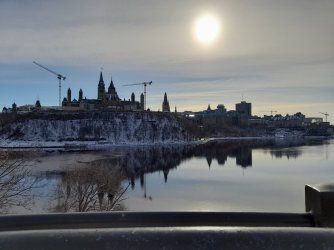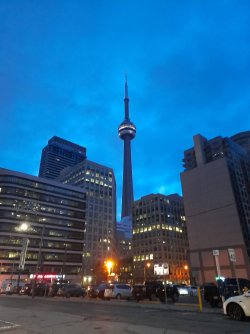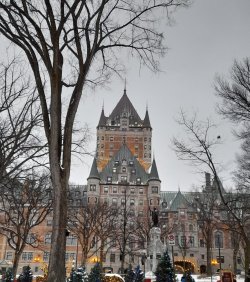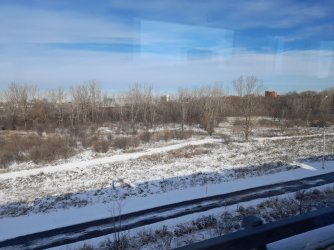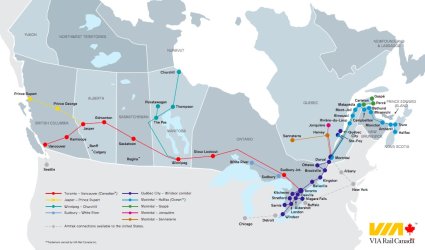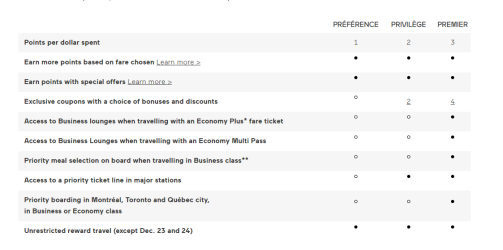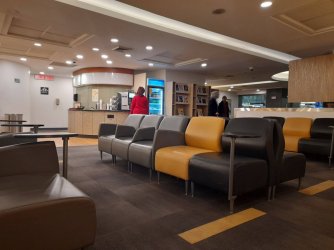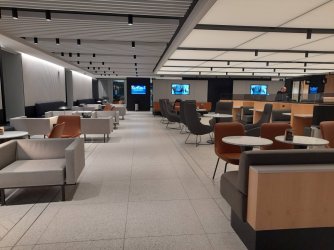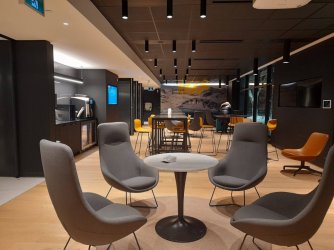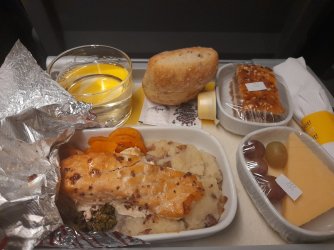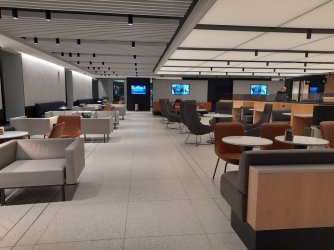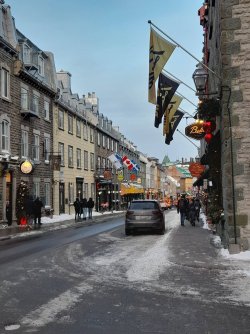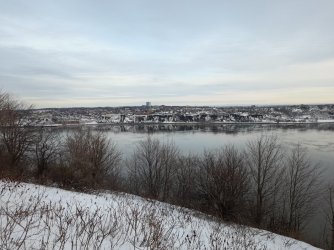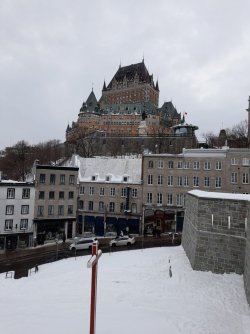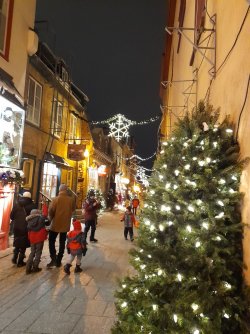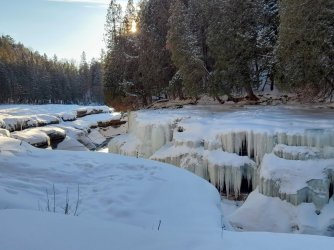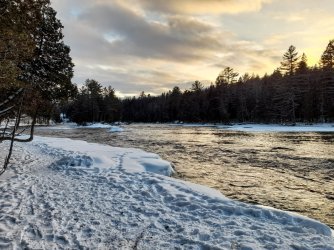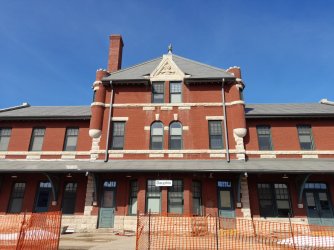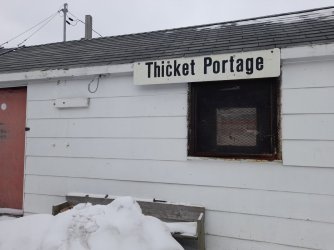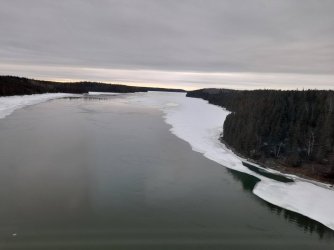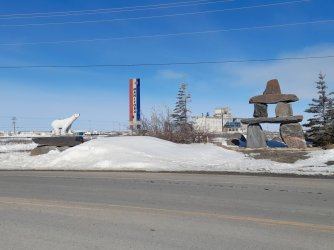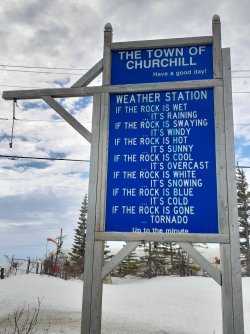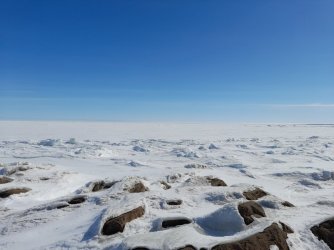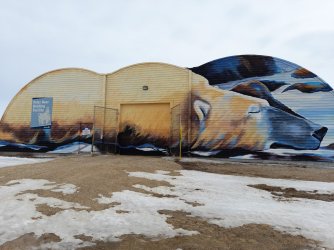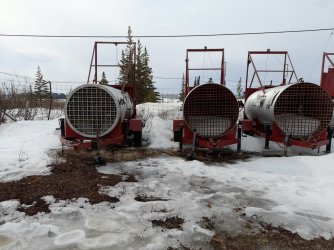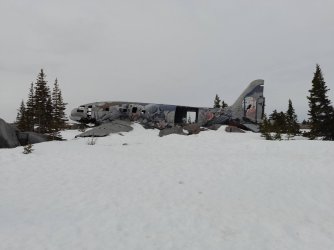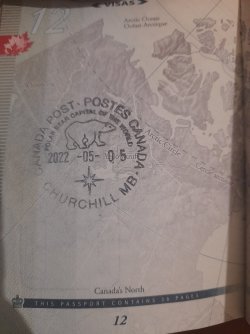National legend and folk singer Gordon Lightfoot died recently. In the 60s through to the 90s he was a staple in Canadian households with his simple, slightly melancholic sound and songs that told stories about infidelity, nature, and shipwrecks. His most well-known songs are probably ‘The Wreck of the Edmund Fitzgerald’ and ‘Sundown’, but the one I’m listening to now as I write this is ‘
Canadian Railroad Trilogy’. It was commissioned by the Canadian Broadcasting Corporation (which was the successor of the network of radio stations that Canadian National ran for its employees) and tells about the romanticism and economic rationale for building the railroad, but also about the travails of the workers, and it speeds up after the start and slows down before the end, kind of like a train on its journey.
The Canadian
There’s no continuous cross-country train service. Vancouver connects to Toronto, Toronto to Montreal, and Montreal to Halifax. The Vancouver-Toronto line is called the Canadian and the whole trip takes four days. I did it in economy class.
The old-style rail cars are used, each named after some prominent person/executive in VIA’s history. I was told by one car attendant that the windows are bulletproof. The other attendants I talked to could not corroborate this and no one shot at us for me to find out.
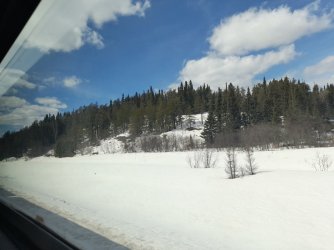
The segment from Toronto to Winnipeg takes us through the Canadian Shield, with its boreal forests, muskeg (swamps), and limestone hills.
Winnipeg, the capital of Manitoba, is the base of VIA Rail operations and connects the east to the west. It is where rail crews who work the Vancouver-Toronto and Winnipeg-Churchill routes live.
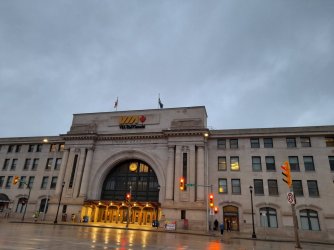
Union Station is located in The Forks, so named because it’s where the Red River meets the Assiniboine River. This made it a good location for fur traders as they could easily have furs transported here, and was the reason the railroad came here several decades later. French traders came to Manitoba first and mixed with Native American women to form what is now recognised as a distinct ethnic group, the Métis.
Then the British came, Manitoba was ceded to Hudson’s Bay Company after the Seven Years’ War, and then the Canadian government bought the land and made it a province. A Métis rebellion led by Louis Riel failed, but he did manage to negotiate conditions for Manitoba entering the Confederation and is considered the father of Manitoba. He fled to the US after the rebellion, but returned to Canada to help the Métis in Saskatchewan with another rebellion – this time he was caught, tried (many would argue unfairly), and executed for treason.
His execution has caused a lasting divide in Anglo-French relations in the country. He has been upheld as a model in Quebec independence movements, including by the terrorist organisation Front de Libération du Québec.

Another cultural landmark in Winnipeg/Saint-Boniface (the French side of the city) is the childhood home of Gabrielle Roy. While she's best known as the author of
The Tin Flute, a novel about working-class Montrealers in WWII that gave rise to a nascent understanding of Quebec national identity, many forget that she was from Manitoba and that her formative experiences were from Saint-Boniface and teaching in northern Manitoba.
From Winnipeg onwards the landscape gradually flattens out into the badlands of eastern Saskatchewan, where you’ll occasionally see carcasses of tractors and deer.
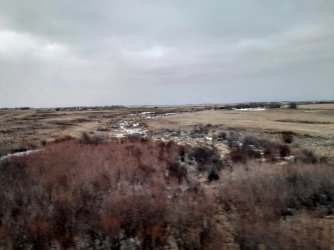
Saskatchewan is the wheat basket of Canada, with a large proportion of its population (which is less than that of Adelaide’s) engaged in the agriculture industry. The Saskatchewan Wheat Pool was a farmers’ cooperative that bargained for a fair price for wheat and handled its collection and shipping. Every couple of kilometres along the railway line, wooden grain elevators were built where the wheat would be stored for when the freight train came to pick it up. A few can be seen along the way.
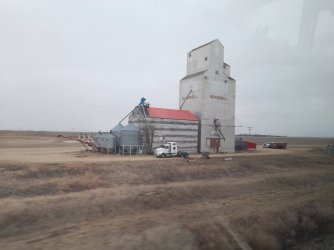
These wooden grain elevators used to be centrepieces of their towns but are now fast-disappearing symbols of the traditional way of life that had built the province.
The train stops in Saskatoon. The city feels a bit like a country town. It has a Western Development Museum that describes the history of Saskatchewan and has some preserved train models and the world's largest collection of tractors.
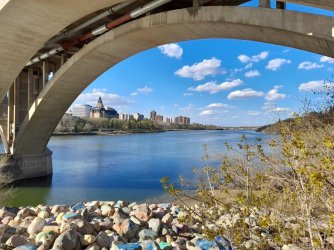
The Broadway Bridge over the South Saskatchewan River, with the château-style Delta Bessborough hotel visible. This was one of CN's last grand railway hotels. Before Winnipeg, Saskatoon was the main hub city for passenger and freight transport between the east and the west.
I took the bus down to Regina to visit the Royal Saskatchewan Museum, which has the world's largest T-rex skeleton, Scotty.
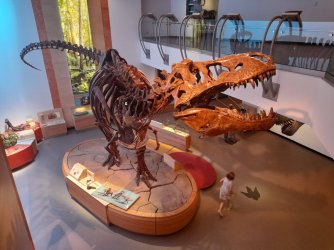
On the border between Saskatchewan and Alberta is a town called Lloydminster that is split in half by the border, which is marked by these red poles.
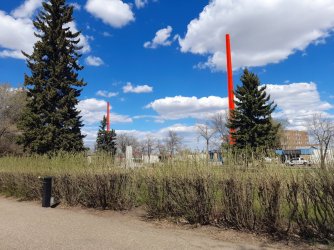
Because Alberta's legal drinking age is 18 and Saskatchewan's is 19, if you're an 18-year-old from Lloydminster you would only be able to get booze in one half of the town.
Eastern Alberta is also prairie land but halfway through the plains give way to mountains and soon we arrive at Jasper. The Canadian stops here for about two hours so you can get off and wander around town.
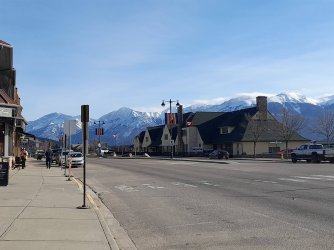
The Canadian actually does not pass much through the Rockies - there is another train from Jasper to St Rupert that is much more scenic.
Then, soon after crossing over into British Columbia, hills, forests, and lakes become features of the landscape.
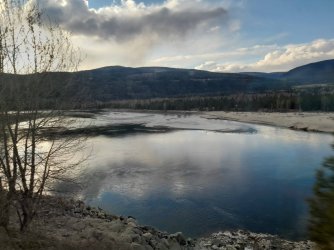
-
I think taking the Canadian the whole way is an essential part of seeing Canada, but better in sleeper class or only once in economy. If in economy I would recommend sleeping in dome car as there are fewer people around and you can awaken with the sunrise. (In economy on the Montreal-Halifax line you can sleep in the diner car where there are benches, but I don't think we were given access to the diner car on the Canadian.)
There is a 'guide' who will give you a few facts about some places along the way, but it's not a hop-on-hop-off service - if you want to stop along the way, you'll have to wait three days for the next train. There is no wi-fi onboard and it's often hard to get connection with cellular data. Meals are included in sleeper class while light meals like sandwiches/wraps/burgers can be purchased in economy.
Sleeper passengers have access to showers, economy don't, but the train stops for about four hours in Winnipeg and one could find a place to shower or take a dip in the river with the beavers. One of my fellow passengers said he’d taken his first hot shower in 10 years in Toronto before boarding. He normally lived in the forest on Vancouver Island, sleeping in a hammock and bathing in the lakes.
